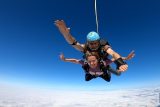Skydiving Disciplines Explained
Blog
 Posted by: Curtis White
3 years ago
Posted by: Curtis White
3 years ago
Though a tad misleading, the phrase “skydiving discipline” isn’t what happens when a jumper misbehaves. Rather, skydiving disciplines are different branches within the sport of skydiving. Hold the phone … skydiving is a sport? Yes, indeedy!
If your exposure to skydiving has been limited to mainstream media, Hollywood blockbusters, or a tandem skydiving experience, you might not realize how vast and varied the world of skydiving is. As it so happens, skydiving is both a recreational hobby and a competitive pursuit, but we will get into the latter a bit more later.
At the core, skydiving refers to an activity in which you board an aircraft and exit, voluntarily, for fun. However, we don’t just flop around in the air until it’s time to deploy our parachutes. (Well… maybe just a little at the start of our journey.) Rather, within skydiving, there are several different, structured skydiving disciplines and “forms of falling” that we can explore.
Interested in delving a bit deeper? Let’s jump right in!
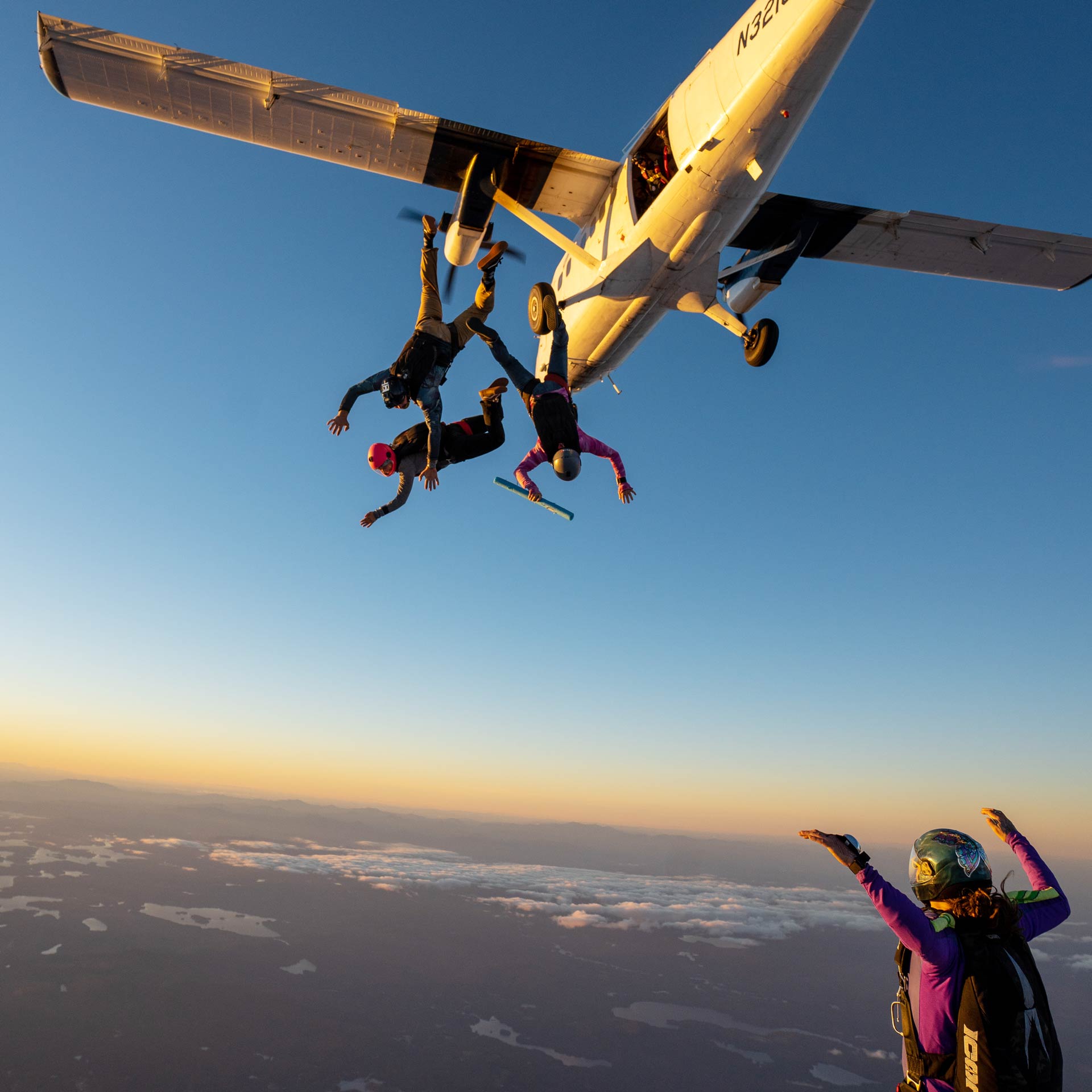
Freefall Skydiving Disciplines
There are two “primary” portions of any skydive: the freefall and the canopy flight beneath the parachute. The skydiving disciplines below utilize the approximate 60-second freefall portion of a skydive.
Formation Skydiving
Formation skydiving – also often referred to as belly flying or relative work (RW) – is a skydiving discipline during which individuals maintain a belly-to-earth orientation during freefall. Additionally, these skydivers build formations by holding on to grippers that are sewn into the arms and legs of a skydiving jumpsuit.
More advanced forms of formation skydiving involve repeating patterns of formations in conjunction with specific joint maneuvers of groups of two (or more) linked individuals.
Of all the skydiving disciplines, formation skydiving is one of the most accessible. Flying in a stable, belly-to-earth orientation is the foundation of body flight skills and is taught from the very beginning to students as they learn to skydive. However, make no mistake about it, formation skydiving, particularly at the competitive level, is far from easy.
Freeflying
Freeflying is a combination of skydiving disciplines that utilize an orientation other than belly-to-earth. The skydiving disciplines beneath the umbrella of freeflying include:
- Back flying, where you fly with your back toward the earth rather than your belly
- Sit flying, where you fly in an upright orientation similar to sitting in a chair
- Head down, when you fly in an orientation with your head pointed toward the ground
Now, to bend your mind just a bit, you can also build formations while freeflying, and there are competitive skydiving disciplines within freeflying – Vertical Formation Skydiving (VFS) and Mixed Formation Skydiving – where groups of individuals build sequences of formations in these alternate orientations.
Generally, it is good practice to have a solid belly-flying foundation before beginning to practice freeflying. Because of the reduced surface area to the relative wind, individuals who freefly are falling much more quickly than their belly-flying counterparts. These increased speeds reduce the margin for error and often require skydiving equipment that is “freefly friendly.”
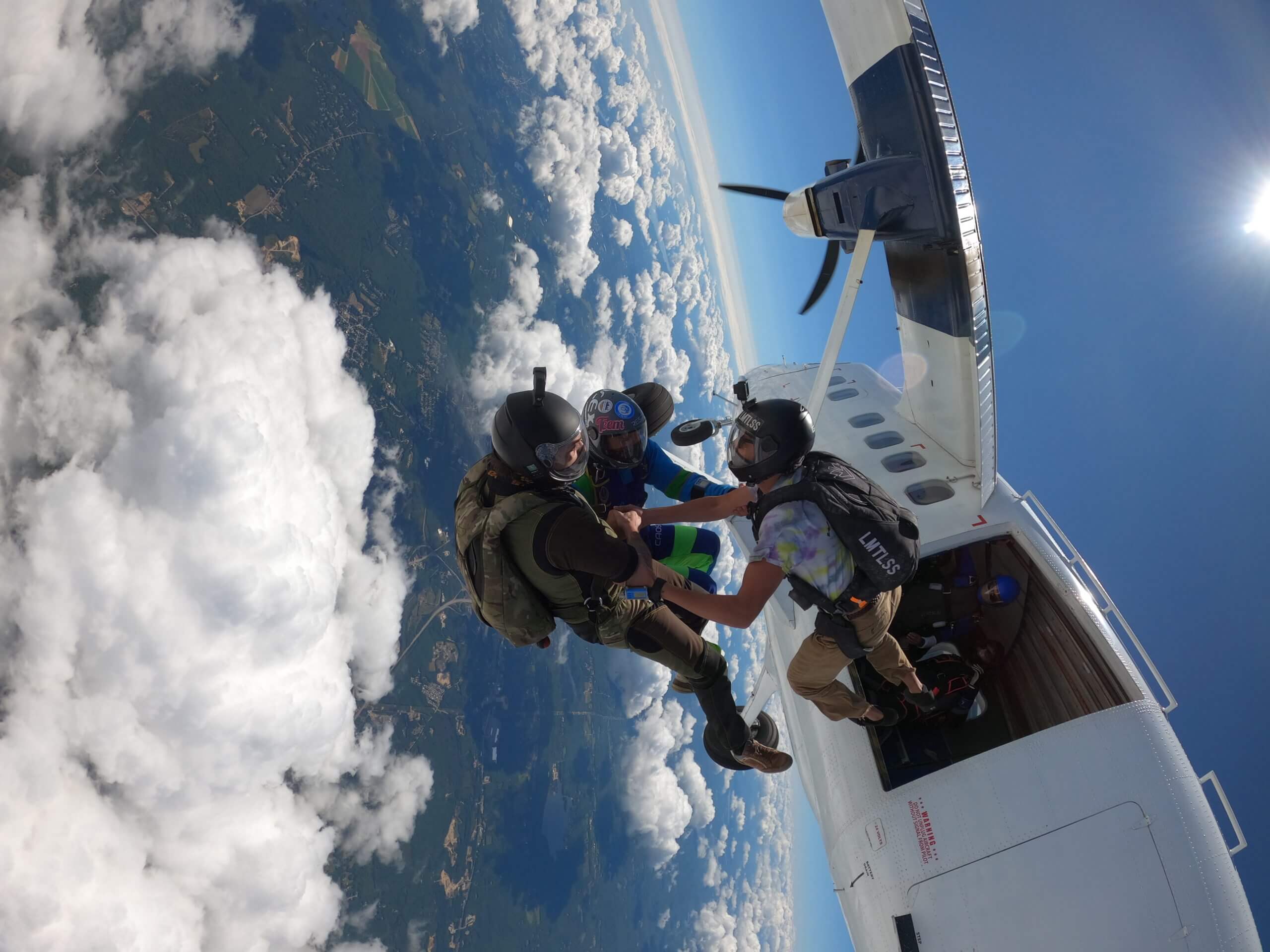
Angle Flying
The other skydiving disciplines we have discussed thus far are generally done statically, meaning the individuals are falling straight down. Angle flying is considered a “movement” skydiving discipline because these skydivers travel across the sky.
Angle flying can occur at various degrees of pitch. Novice flyers will tend to fly perpendicular to the earth along a more horizontal axis. As an individual progresses in angle flying, this pitch will become steeper with a diagonal trajectory toward the earth. Angle flying can be done both with the belly-to-earth and the back-to-earth orientation, and some expert flyers can even angle fly in a standing orientation.
To mitigate risk, angle flying requires planning, preparation, and properly-suited skydiving equipment.
Wingsuiting
Wingsuiting is one of the most identifiable skydiving disciplines to non-skydivers because of the notable wingsuit (often called a flying squirrel suit by the casual observer). Utilizing the added lift of material stretched between the wrist and hip and between the legs, wingsuiters can glide throughout the sky. Like angle flying, wingsuit skydiving is considered a movement skydiving discipline. As an individual gains experience and skill, they may begin wearing wingsuits with greater wingspan and surface area which enables increased gliding speed and freefall time.
Alternatively, proficient and advanced wingsuiters may also don wingsuits that are modified for more acrobatic moves, like flips and barrel rolls. To begin wingsuiting, an individual must have completed 200 skydives and go through a wingsuit first jump course.
Canopy Piloting Skydiving Disciplines
Did you know, there are skydiving disciplines that involve little to no freefall at all? As we mentioned above, there are two primary parts to a skydive: the freefall and the canopy flight beneath the parachute. Canopy piloting skydiving disciplines are focused on the flight beneath the parachute.
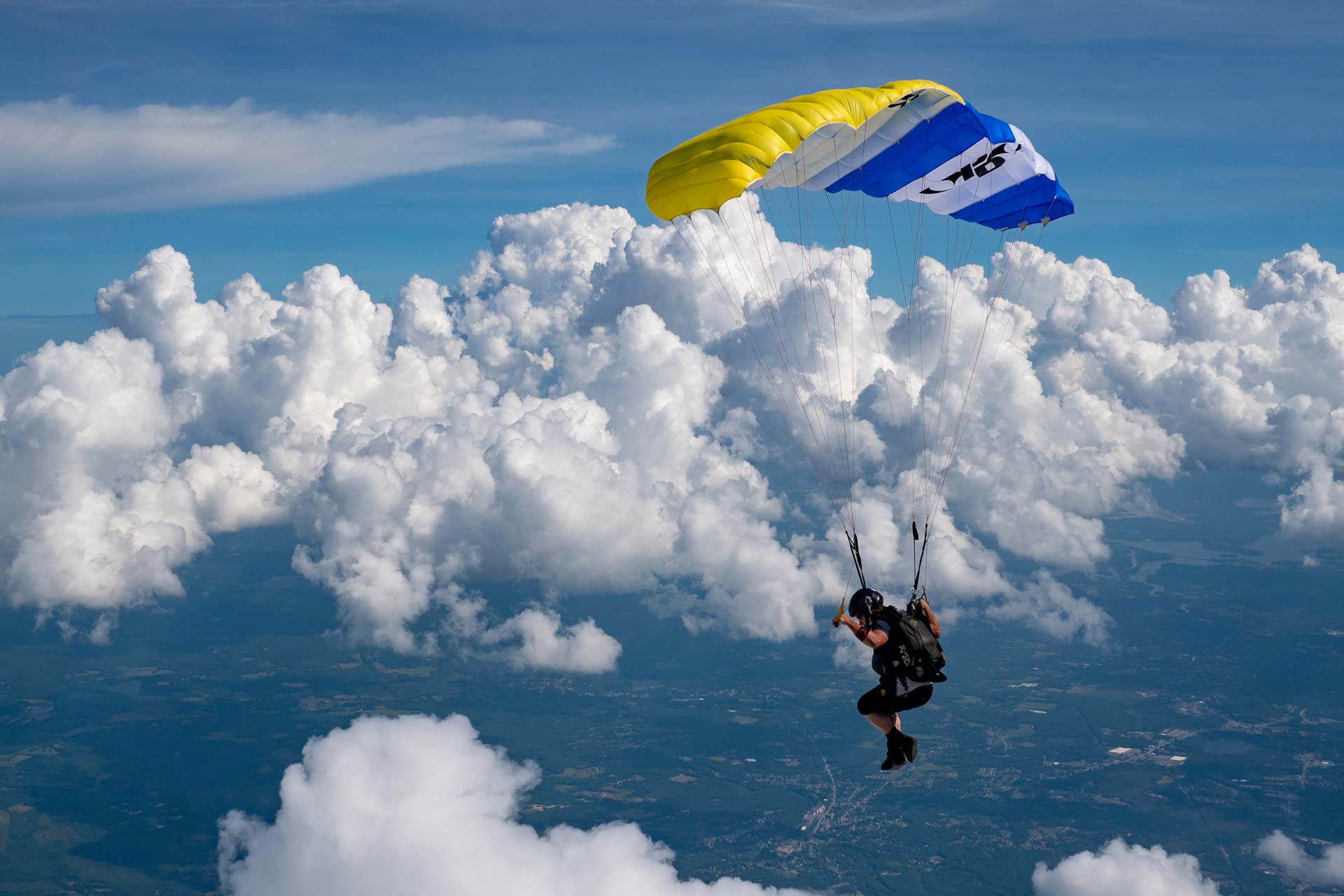
Canopy Piloting / Swooping
Within our sport, canopy piloting is often referred to as swooping. Canopy piloting (or swooping) is a high-speed skydiving discipline that utilizes small, agile parachutes. Individuals will exit the aircraft at a lower altitude (generally 3,500-5,500 ft) and deploy their parachutes within 3 to 5 seconds.
As they approach the ground, individuals then accelerate their parachutes by inducing sharp turns with manual inputs, as long as altitude allows. Competitive canopy piloting competitions consist of rounds that focus on accuracy, speed, and distance. There is also a separate subset of canopy piloting called Freestyle which showcases the artistic elements of canopy flight.
Canopy piloting/swooping requires a breadth of knowledge of how a parachute works and flies. Individuals interested in this skydiving discipline will attend numerous canopy courses and often receive one-on-one coaching to grow their skills.
Another type of canopy piloting that is growing in popularity is known as “flocking.” Similar to the geese you may see flying overhead in a V formation during certain parts of the year, canopy pilots “flock” by building flying formations with their parachutes.
Canopy Relative Work / CRW
In this skydiving discipline, individuals exit the aircraft from full altitude and deploy their parachutes. These individuals then intentionally maneuver their parachutes to build various formations.
Unlike flocking, in CRW, the skydivers beneath the parachutes will often link themselves together to form shapes either by having the canopies touching or by having a parachutist wrap specific lines of another parachutist’s canopy around their legs.
To participate in this skydiving discipline, an individual must be well acquainted with the aerodynamics of their parachute, undergo the prerequisite training, and attend specific events aimed at honing their skills in this challenging skydiving discipline. CRW also requires specific equipment and parachute-packing techniques.
XRW / Cross Relative Work
Commonly referred to as XRW, Cross Relative Work is a skydiving discipline that transcends the freefall/parachute barrier.
XRW is a skydiving discipline where individuals fly big wingsuits alongside skydivers flying relatively small, agile parachutes. On an XRW jump, often the ultimate goal is for the individual flying the parachute to “settle” on top of the wingsuiter who is generally flying on their back. Other XRW jumps just include both parties (the wingsuiter and the canopy pilot) flying in proximity to each other. This discipline is only for exceptionally advanced, skilled winguiters and canopy pilots.
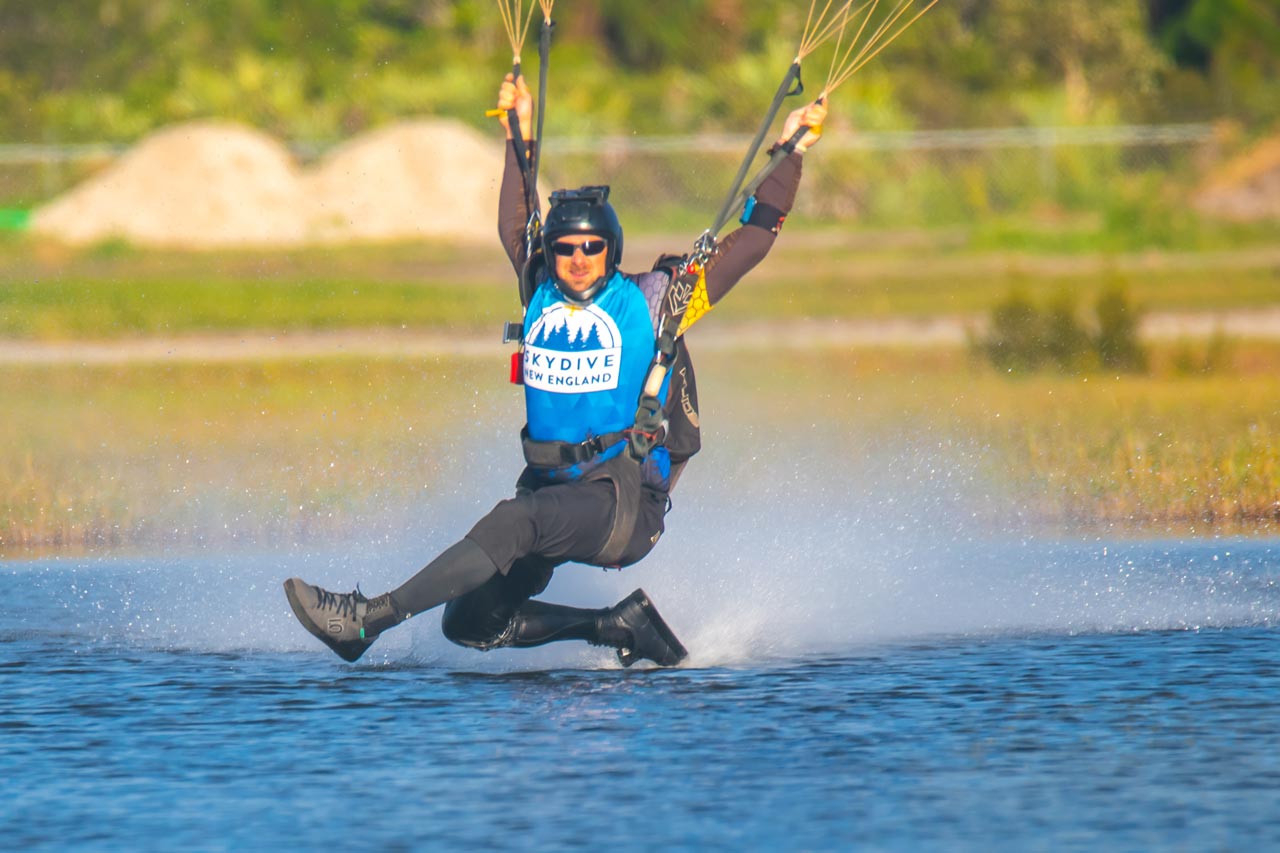
Competitive Skydiving
You may be surprised to learn that nearly all skydiving disciplines have a place within the competitive arena. As it stands, angle flying is currently the only skydiving discipline for which there is no competition. Though, who knows!? Perhaps it will make an appearance on the competitive circuit in the years to come!
Competitive skydiving, regardless of the discipline you choose, is a wonderful way to grow and learn within the sport of skydiving. From making new friends to honing your skills, competitive skydiving is an excellent avenue to pursue!
What Skydiving Discipline Appeals Most to You?
Ready to take the first step on your skydiving journey? Schedule your first tandem skydive today! Or if you’ve already made a tandem skydive, sign up for your Accelerated Free Fall First Jump Course.
We’re ready when you are!
Categories:
You May Be Interested In:
Enter to Win a Free Skydive
Join our email list and enter to win a free tandem skydive. Drawings in April and December; winner announced on social media.
You’ll get a $10 coupon toward a tandem just for signing up! Must be 18 and under 240 lbs to jump.
*By submitting this form, you are consenting to receive marketing emails from Skydive New England, 40 Skydive Lane, Lebanon, Maine 04027. You can revoke your consent by using the SafeUnsubscribe link located at the bottom of every email. Emails are serviced by Constant Contact.
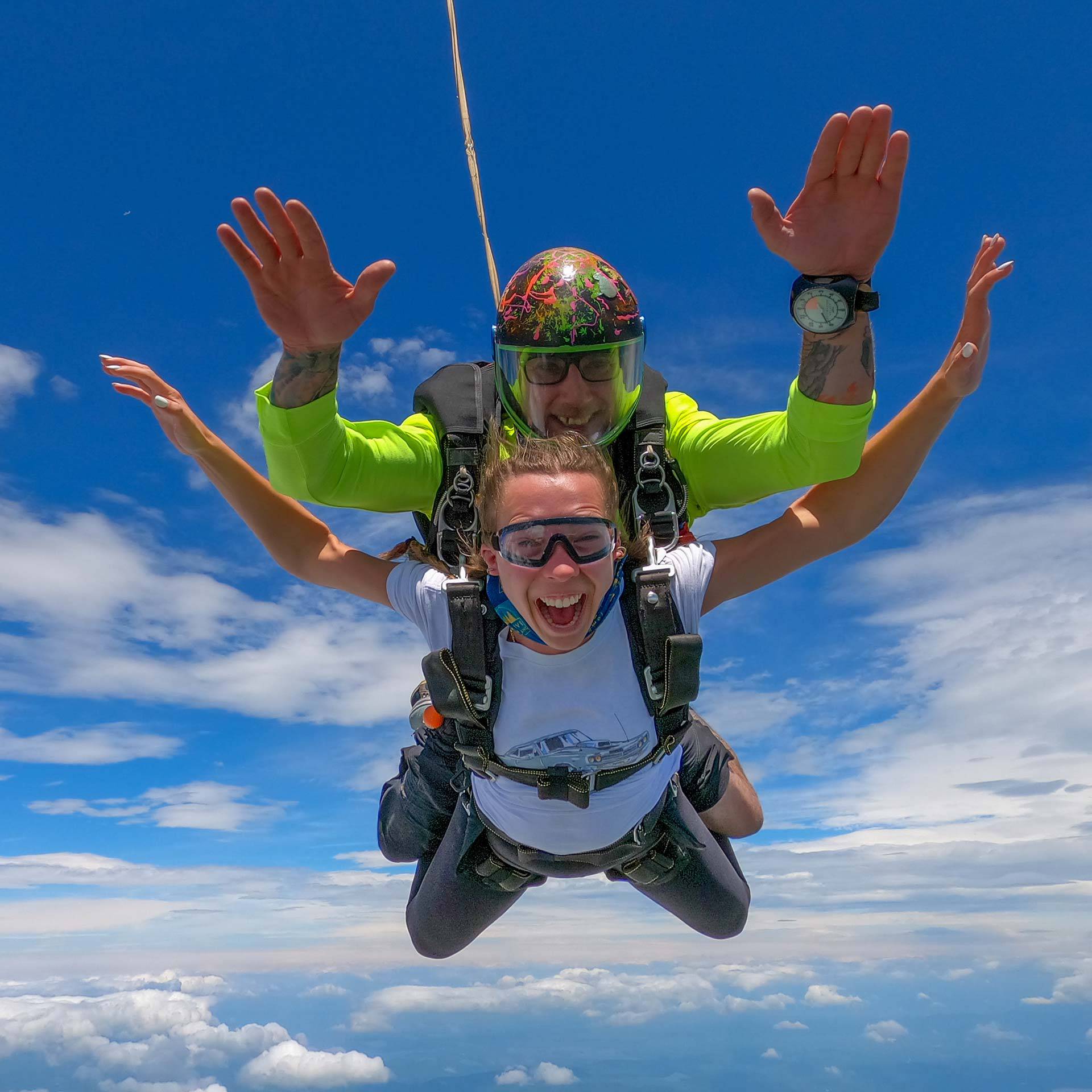
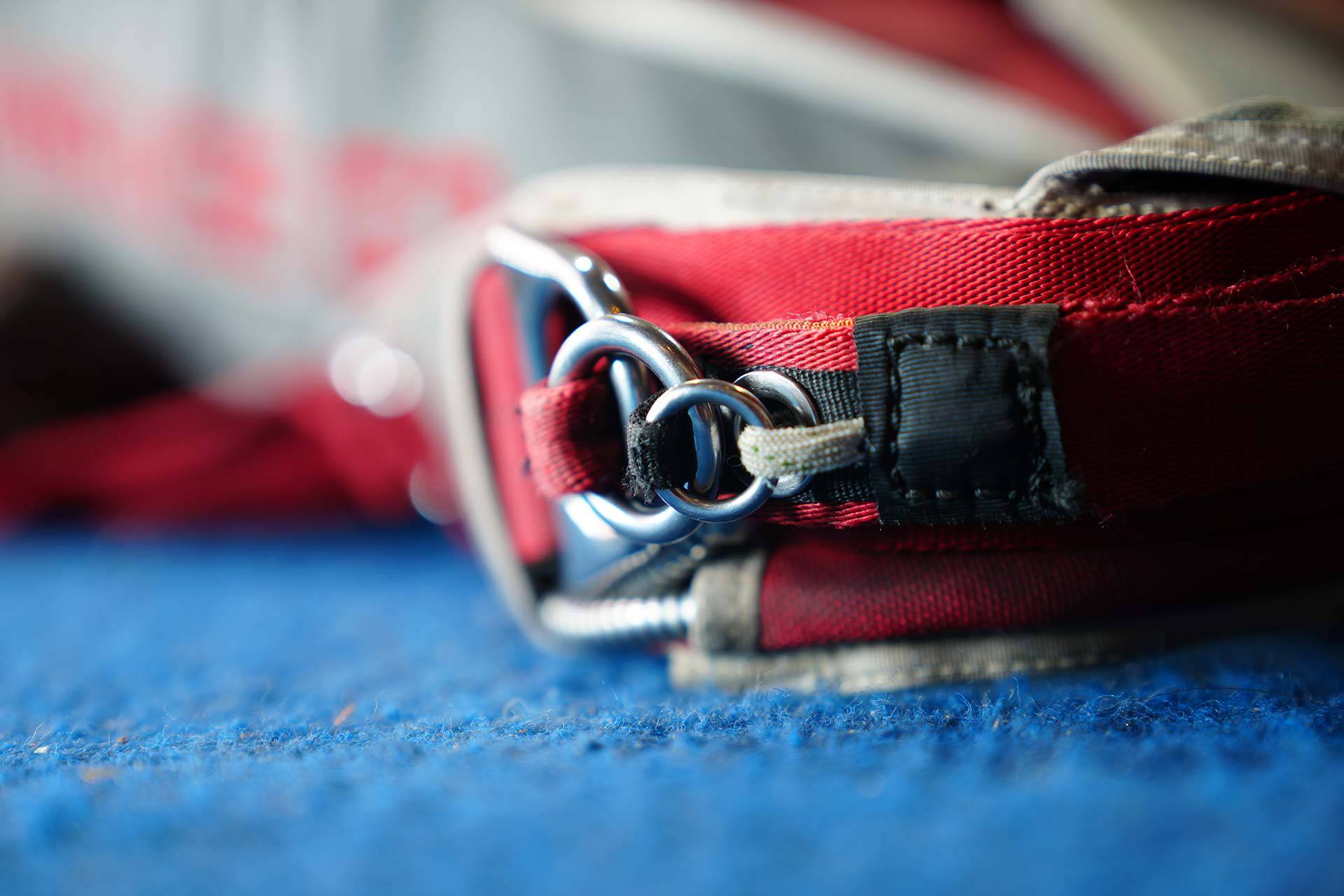
Even More Wicked-Fun Than It Looks!
Come see why the biggest DZ in New England is also the best.



